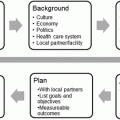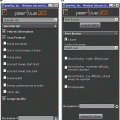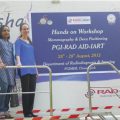Fig. 3.1
World access to imaging technology, 1979 survey
The WHO continued to publish manuals with the goal of disseminating educational resources, but it was not until 2007 that they, again, started focusing on assessing access to medical imaging in developing nations [17]. Their work led to creation of the Baseline Country Survey on Medical Devices in 2010, a two-page survey that covers the availability of specific imaging technology, national policies on health technology, guidelines on procurement of medical devices, regulatory bodies, and healthcare infrastructure [3, 4]. It was administered to the ministries of health in 145 WHO member countries. Seeming to build upon the survey in 1979, the questionnaire allows one to understand the various factors that make up the term “access.” For example, low- and lower middle-income countries, as defined in the World Health Statistics report from the WHO, had fewer than 1 mammography units per million people compared to 23 per million in high-income countries [25]. In terms of CT imaging, 1 unit per million people was found in low- and lower middle-income countries, while slightly higher than 44 units per million were seen in high-income countries who participated in the survey [3]. This disparity between the developed and developing world is the same, if not worse, when looking at access to MRI, PET, and nuclear imaging devices as per the baseline survey.
While the report on the baseline survey breaks data down by nation, the annual World Health Statistics report and Global Health Observatory Data Repository complied by the WHO separate the questionnaire data based on imaging device, regulation standards, and hospital infrastructure among other things. This can further be categorized by a nation’s income level [14, 25]. For example, since national policy and regulations also influence access, the questionnaire found that of the low-income countries who participated, only 33 % have a national policy for health technology. In addition, 40 % of low-income countries do not have an authority responsible for implementing and enforcing medical device regulations which ensures the safety of the device for the practitioner and the patient [7]. Regarding infrastructure, one key statistic was the discrepancy in available hospital beds: 16.5 per 10,000 people in low- and lower middle-income countries compared to more than three times that number in high-income countries.
Understanding Adequate Access
It is evident from the data collected that disparity exists between developed and developing countries. However, disparity in access to health care and medical technology also exists within developing nations, specifically between the private sector and the public sector. While the private sector has the resources to offer needed imaging services, it is inaccessible to many in a country due to cost and its location in urban areas. Medical facilities in the public sector, on the other hand, aim to provide for all, but are overburdened due to the volume of demand and a lack of sufficient resources both in trained staff and imaging devices. For public sector facilities in more rural areas, the challenge lies in having the resources to house, maintain, and repair the most basic imaging services as well as entice trained staff to stay in the area to offer services [1, 9, 13]. With this in mind, the most important next step in understanding access to diagnostic imaging technology is the Needs Assessment for Medical Devices, a technical review series report published by the WHO in 2011 that outlines exactly how a country’s ministry of health can calculate the gaps in access to medical device technology [17]. In its simplest form, it is meant to assist a nation in cataloguing what is available in terms of imaging technology with what should be available to better define their gap in care. More specifically, it offers a seven-step approach that can be used at the local up to the national level. Continuing to build upon prior surveys, this WHO model takes into account financial, human resource, and infrastructure constraints, as well as data on the unique disease burden of a nation to best assess need. As mentioned in the last step, this allows a nation to prioritize need in hopes of maximizing the utility of every intervention [17].
Clearly, a thorough definition of the term “access” by the WHO has paved the way for numerous reports and a compilation of technical series on medical devices that serve as resources for nations as they construct, among other things, a needs-based assessment of medical imaging technology. Nonetheless, at the core, a definition of need has to be compared with a definition of adequate access. For example, a WHO manual on diagnostic imaging in communities cites that there should be at least 1 diagnostic imaging system, 1 X-ray and 1 ultrasound unit, per 50,000 people [20]. Using this barometer, it is easy to see that developing countries have not reached the capacity to provide appropriate access to both X-ray and ultrasound technology [2, 5, 9, 15]. Therefore, what remains to be seen are other benchmarks devised by the WHO to aid nations in understanding adequate access.
Conclusion
In light of the pervasive presence of imaging technology in the United States, it is easy to take for granted a technology that forever has been so difficult to provide in much of the world. The first step in attacking this problem is to understand the various factors that contribute to the definition of “access” as outlined by the WHO. Next, looking at the various surveys conducted by the WHO, it is easy to see a disparity in the access to medical imaging technology, among all modalities, between the developed and the developing world. Now, with the needs-based assessment in place, the WHO has laid the foundation for uncovering the overall gap in adequate imaging technology. With this information, all parties involved, whether it is radiologists, radiologic technologists, sonographers, NGOs, ministries of health, or developing nations, will be able to join forces to close this gap.
Stay updated, free articles. Join our Telegram channel

Full access? Get Clinical Tree






